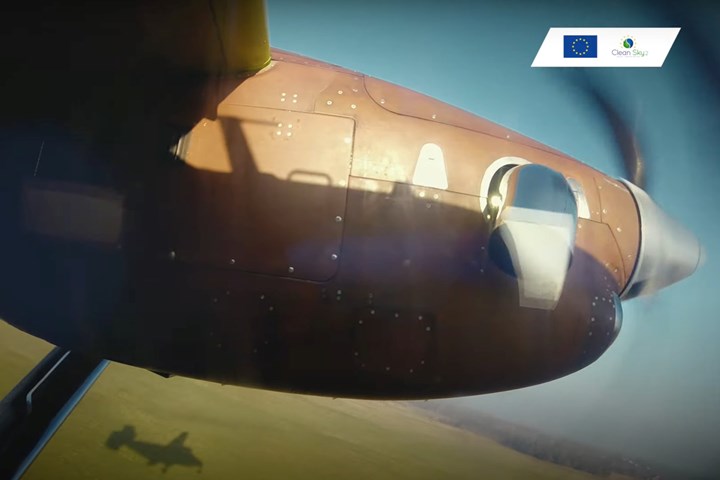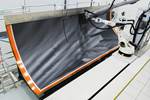More Affordable Small Aircraft Manufacturing project in Clean Sky 2 replaces metal nacelle with composites
SAT-AM project composite nacelle reduced component weight by at least 10%, reduced the number of elements by more than 35%, resulted in a more uniform structure and reached TRL 6.

Photo Credit: SAT-AM project in Clean Sky 2
SAT-AM (More Affordable Small Aircraft Manufacturing) is a five-year project implemented under the Clean Sky 2 program financed by the European Commission. Entering its final stage of implementation, the project aims for a new step in the production of structures for aircraft in the 4-19 seat category.
The work in SAT-AM has been carried out by the consortium including project coordinator, Łukasiewicz – Institute of Aviation (Warsaw, Poland), together with project consortium members: Polskie Zakłady Lotnicze Sp. z o. o., Eurotech, Szel-Tech, P.W. Metrol, Ultratech, Zakłady Lotnicze Margański & Mysłowski and Centro Italiano Ricerche Aerospaziali (CIRA). Recently presented results include the development of a cabin demonstrator and a composite engine nacelle for the M28 aircraft manufactured by PZL Mielec (Mielec, Poland). The composite nacelle has potential to replace the metal structure in future production.
The composite nacelle, manufactured using Hexcel’s (Stamford, Conn., U.S.) out-of-autoclave (OOA) technology, reduced component weight by at least 10%, reduced the number of elements by more than 35%, resulted in a more uniform structure and reached TRL 6.
A summary of the work related to the implementation of the composite nacelle demonstrator is presented in the video below.
Small air transport
The SAT-AM project is part of the activities for the promotion and development of Small Air Transport (SAT). The European vision presented in the Flightpath 2050 study assumes a renaissance of flights from smaller, regional airports. The goal is to complete the journey door-to-door within four hours.
For the idea of SATto become more widely accepted, it is necessary to develop innovative design processes and production technologies for smaller aircraft. The goal is to increase the flight safety of an aircraft while reducing manufacturing costs.
It will also be important to develop breakthrough technologies that will significantly improve the environmental performance of aircraft. There are four specific targets: reducing fuel consumption, lowering CO2 emissions, reducing external noise levels up to 50% and reducing NOx emissions up to 80% by year 2020, compared to year 2000 levels.

Composite nacelle developed in SAT-AM project for Clean Sky 2, aimed at reduced manufacturing costs and environmental impact for small air transport (SAT) aircraft (4-19 seats).
Related Content
-
Natural fiber composites: Growing to fit sustainability needs
Led by global and industry-wide sustainability goals, commercial interest in flax and hemp fiber-reinforced composites grows into higher-performance, higher-volume applications.
-
TU Munich develops cuboidal conformable tanks using carbon fiber composites for increased hydrogen storage
Flat tank enabling standard platform for BEV and FCEV uses thermoplastic and thermoset composites, overwrapped skeleton design in pursuit of 25% more H2 storage.
-
Plant tour: Joby Aviation, Marina, Calif., U.S.
As the advanced air mobility market begins to take shape, market leader Joby Aviation works to industrialize composites manufacturing for its first-generation, composites-intensive, all-electric air taxi.














.jpg;maxWidth=300;quality=90)

